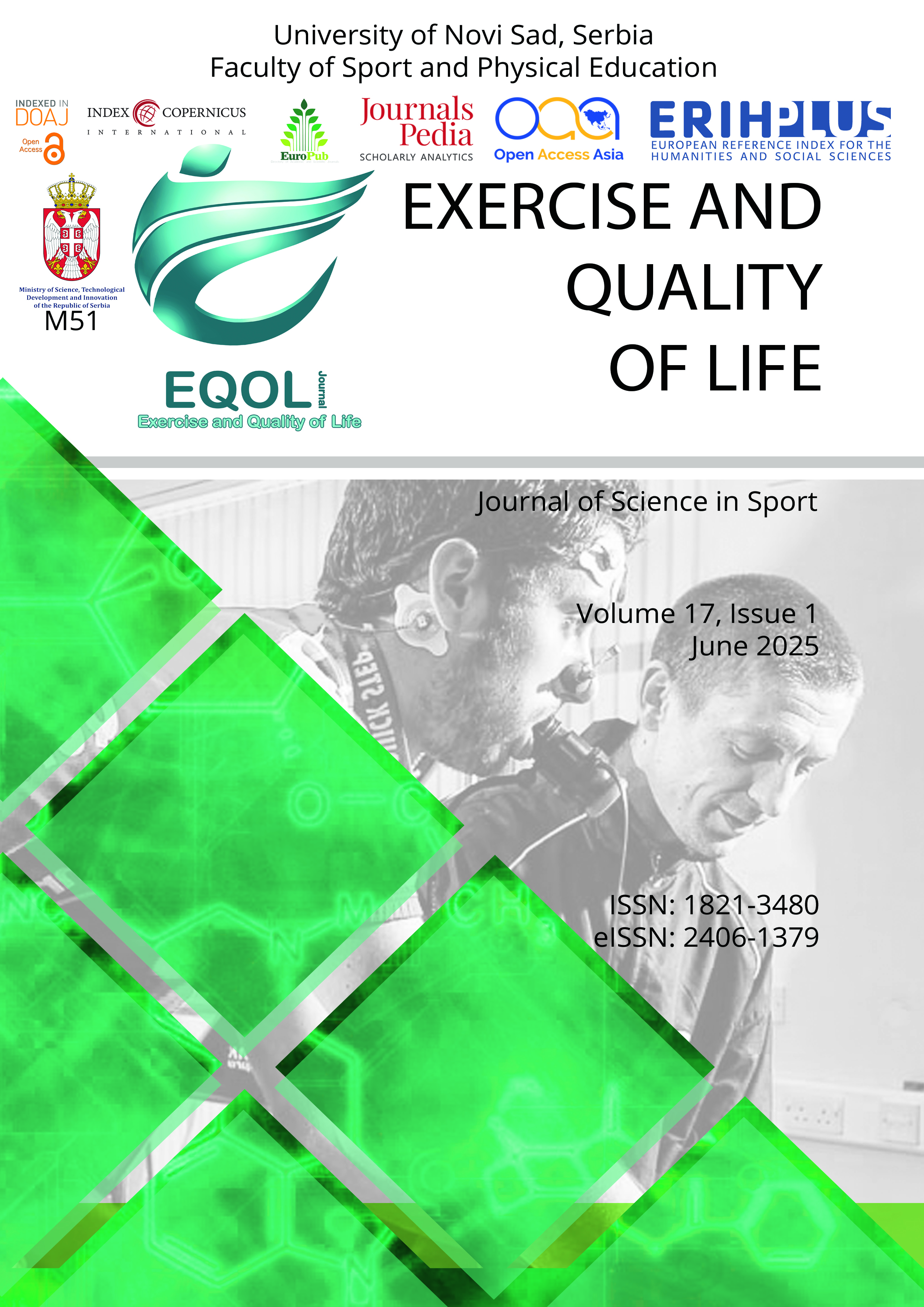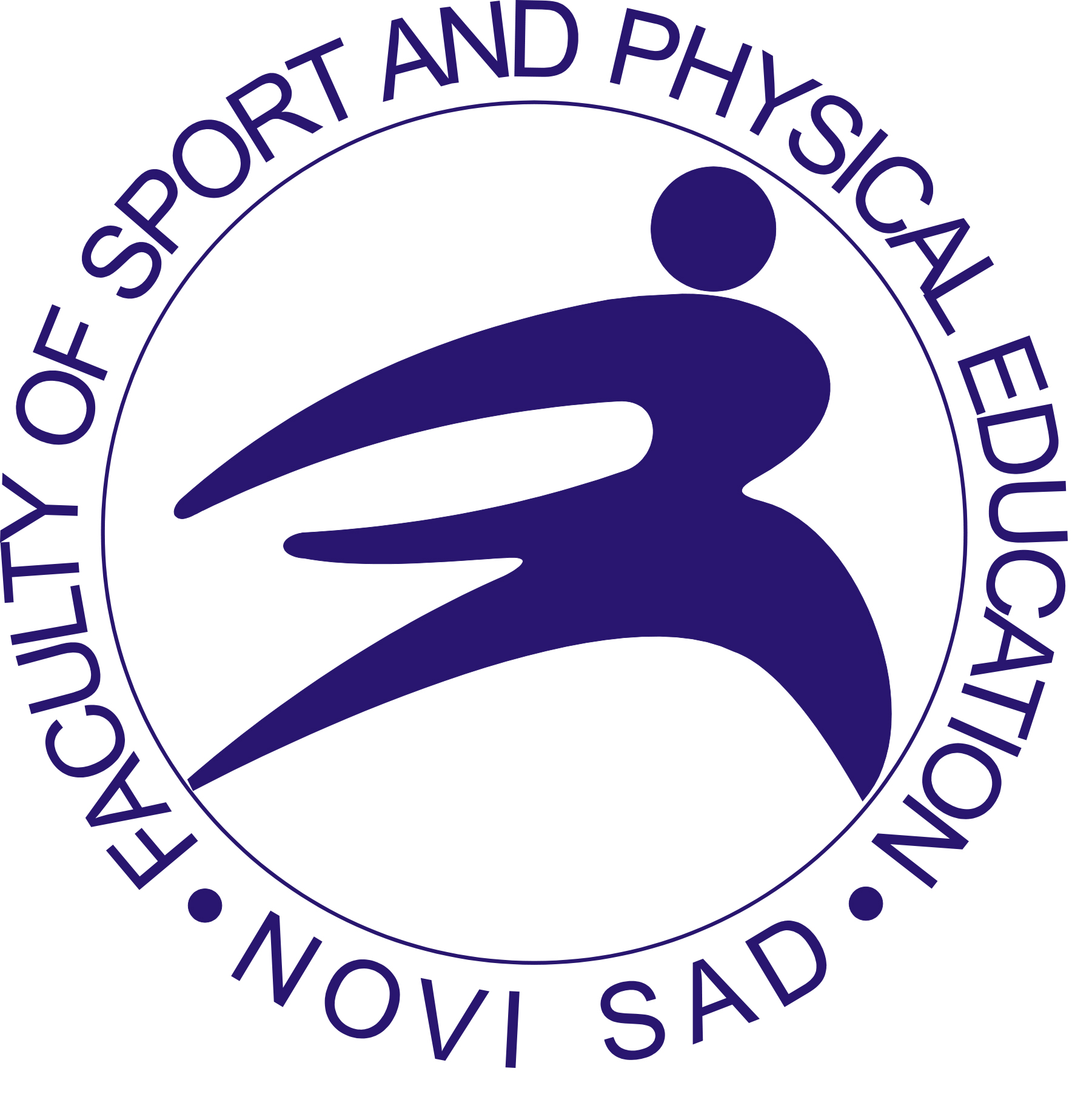Current issue

Volume 17, Issue 1, 2025
Online ISSN: 2406-1379
ISSN: 1821-3480
Volume 17 , Issue 1, (2025)
Published: 15.06.2025.
Open Access
All issues
Contents
15.06.2017.
Original scientific paper
Gender-related differences in motor abilities of children in the fencing school
Fencing is very dynamic and combative sport, with the following requirements of competitors: instant resourcefulness, precision, courage and fast reaction in different situations. It is just for this reason that the training of young fencers involves improvement of all motor abilities focusing on agility, speed, and explosive strength. The aim of this research is to determine gender-related differences of motor abilities in children engaged in fencing. The sample consists of 50 children (26 boys and 24 girls) whose average age is 10.46 years and, who train fencing in the “Omladinac” in Zrenjanin and “Vojvodina” in Novi Sad. Motor abilities are tested by means of four motor tests. Differences are determined using multivariate analysis of variance and univariate analysis of variance. The findings indicate that there is statistically significant difference related to Deep forward bend on the bench and T-test, which is in favor of girls, Long jump test from the standing start in favor of boys, whereas Tapping test does not show any significant difference between boys and girls. Numerous research works show that early maturing girls have better results of motor performance than those with a slower process of maturation (11-13 years), whereas individual differences in terms of motor performance depend on growth and development, especially in boys. Matching of results is related to the observed statistically significant differences in explosive strength in favor of boys and suppleness in favor of girls.
Miroslav Smajić, Nebojša Čokorilo, Vladimir Petrović, Valdemar Štajer, Raško Mićić, Maja Ilić
02.12.2010.
Professional paper
ATTITUDE OF FOOTBALL PLAYERS OF DIFFERENT SPORTING EXPERIENCE TOWARDS UNALLOWED STIMULATIVE RECOVERY DRUGS
Usage of unallowed stimulative drugs for recovery implies consuming or giving to others substances which artificially improve physical and psychical condition of an athlete and thus improve his/her success in sport. The goal of the study is to examine attitudes of football players of various length of sports experience, towards unallowed stimulative substances for recovery. The sample of examinees consists of 120 football players divided into two groups, on basis of the sports experience length (first group: 4-8 years of sport experience, second group: 9-14 years). The sample of variables consists of a system of 10 items (claims) assessed on a 5-grade scale. The importance of the differences between the groups was determined by a multivariate and univariate analysis of variance, discriminative analysis, Royís test, Pearson's coefficient of contingency and the coefficient of multiple correlation. It is evident that football players of different length of sport experience differ among themselves in their attitudes towards unallowed drugs for recovery, however, those differences are not big.
Miroslav Smajić, Dragoljub Bekvalac, Dragoljub Bekvalac, Alen Kapidžić, Alen Kapidžić























